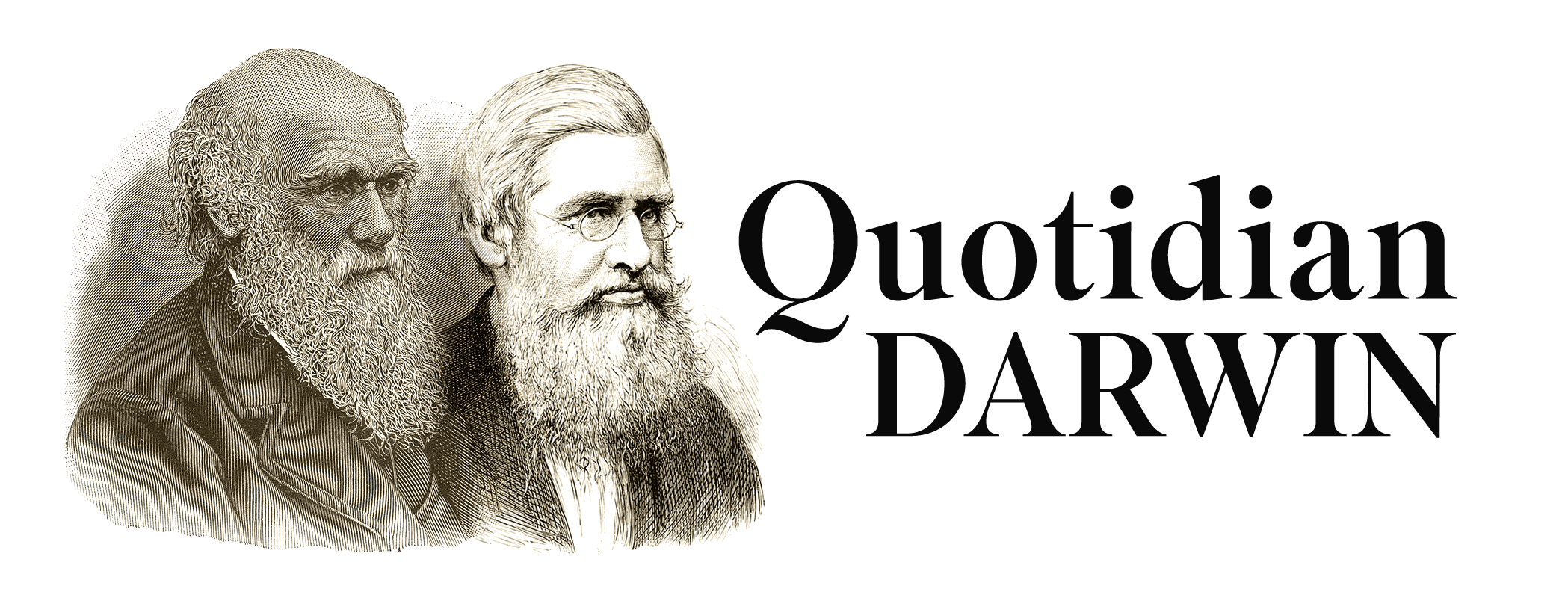Darwin’s Autobiography in Hindi (2012)
Editor’s note: This article is written by Rowe Kruger, author of Dialogues on Transhumanism, 2019.
Unsurprisingly, with such an impactful theory, Darwin’s works and works about Darwin have appeared in a multitude of languages. Darwin: A Companion boasts that 64 known languages, including Hindi, have had works of his translated. The book in question is listed as the Autobiography of Charles Darwin. This is significant, as on page 10 of Companion, Hindi is not listed as a language in which a known translation of his autobiography exists. The edition is listed as having come out in 2012, which makes it, among all the other translations, the latest to the party.
The cover itself depicts a monochromatic ink portrait of an elder Charles Darwin walking along a path, likely the famous sandwalk he spent many an hour in deep thought as he wandered the trail. His head is an accurate depiction though his bowler hat does look a bit off. If compared to the photos in which he wears it, I would say it’s closest to, based on how the brim is curved, a mirrored version of Elliott & Fry 1881a, in which Darwin is facing frontward, whereas it should be based more on Elliott & Fry 1881c, in which Darwin is facing somewhat to the side.
Another thing to note is his outfit which does not correspond to any coat Darwin has ever been photographed wearing. It is likely either the case that the artist chose to depict him in what was assumed to be a generic style of long coat from the time, or it was based off of an iconography of him that is not a photograph. Throughout all of Darwin’s pictures, he wears a distinctively dark coat. The fact that the artist had seen fit to make his hat almost completely black (in front of an equally dark shadowy part of the picture), and shows skill in using hatching to depict dark surfaces, leads me to think this was an intentional artistic decision.
His cane is very likely just a generic one. while Darwin did own a walking stick, it was neither pitch black nor did the handle curve downward at such an extreme manner.
On the title page, it shows Darwin, likely within a serviceable interpretation of his study, in the midst of writing within a book. The book, given what the drawing appears in and the advanced age he’s depicted as, his Autobiography.
The lack of books in the background is likely out of convenience and utility, as the dark black background serves to further highlight what’s important in the picture and helps prevent any details from being obscured from too much noise. Yet, amusingly, it makes him seem bereft of interest in reading even though historically, his shelves were filled top to bottom in volumes. That and the brick walls and clear table, in some ways, makes him look much more humble in finances than he actually was.
Finally, he is depicted as wearing a striped neck-tie. While Darwin did wear a cravat, which is a direct ancestor of the garment, it did not have such a pattern.
Overall, I suspect that the artist was not very concerned with historical accuracy and wanted only to make clear the bare minimum to get the point across-that these are drawings of Charles Darwin who wrote the original version of the book you’re reading. There is still evidently skill in these depictions in both the hatching and the small details such as the fact that part of Darwin’s coat was kicked aside when he lifted his left leg in the first picture. For what it’s worth, these do come off as serviceable examples of visual aid.
As said before, Darwin’s works have evidently been translated into more languages than any other work of science, but his autobiography was widely yet to be known to have been translated. In the case of evolution itself, one could make the argument that if anything had to wait to be translated, it might as well be his autobiography as his scientific works stand as more important and there had been subsequent books on the theory that present a more robust and better resource for anyone looking to learn about it and how it works. But in the case of Charles Darwin itself, I think his autobiography presents importance and should have been translated sooner. It was initially a secretive work, one he wrote for his family and no more which allowed him to present his views and histories honestly knowing that the people who read it would be the least inclined to judge him for any failings.
Darwin may very well be one of the most well recorded historical figures who have ever lived and there are certainly things known about him and what he has done and what he has thought that he might not readily have been able to remember or willing to admit, but none the less his own recollection of his life does present a detailed and charming account. I mentioned that the second picture makes him appear to have been humble in the case of economics, and while his writings would shatter that view, it would certainly strengthen the notion that he was humble in character. Despite discovering one of the most significant findings in all of science, one of which became the foundation for the entire field of biology, he did not think of himself as a god amongst men.
For any Indian who is interested in the history of science and Darwin who may not be well versed in English or any other language, it is nice that such a translation exists even if it is very obscure.


